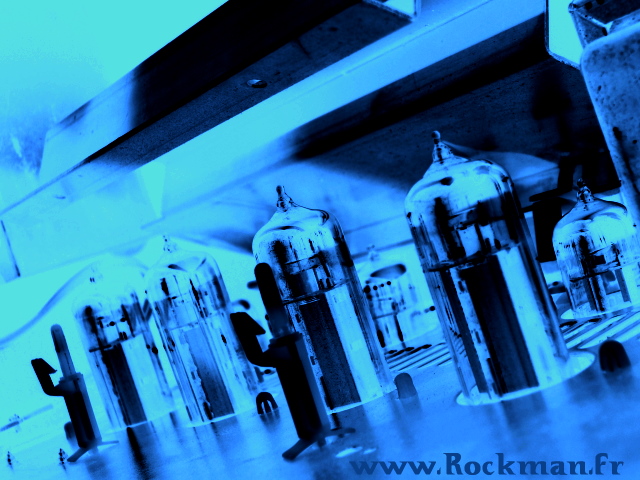I have written, two years ago, a short French website, called “Les lampes pour les nuls” – Tubes for dummies.
I was just getting into Rockman gear, which was then only a great addition to my favorite tube amp – an old Boogie.
The first purpose of this website was to explain in words that every one can understand what a guitar tube amp is. The more I was writing, the more I was realizing that tubes had, from far, more drawbacks than advantages. When I finished writing these few pages, the conclusion was that I wasn’t fond of tube amps: I was fond of my Boogie, which is totally different!
The difference between solid-state and tubes doesn’t rely in technique. The only real difference is that, in 2007, it’s possible to build a correct solid-state for a very low cost, while it’s impossible to build something correct with tubes below a certain price. The matching marketing strategies are thus different. Full point. The rest is strictly a topic for intellectual and sterile discussions. |
 |
If you like intellectual and sterile discussions, here are a few starters. You are authorized to use them whenever you’re looking for a silly discussion subject…
- Tubes amps are louder! No. A Watt is a Watt, but a tube amp can be used beyond its RMS zone without collapsing. Beyond the RMS zone is the power-amp saturation zone, which is difficult, not to say impossible, to use with solid-state with a musical result. A tube amp can therefore generate more electric power than its rated RMS power – with a 1.5 to 1.7 typical ratio, and a theoretical limit of 2.0. That's all...
- Tube amps sound better! No. Tube amps are usually expensive devices, resulting of years of careful R&D, and are therefore rather high-end amps. A real cheap amp is always a solid-state device. High-end gear sounds “better” than low-end gear: what a surprise! Moreover, high-end amps are equipped with speakers having a better sensitivity: a 25W amp with an expensive 103dB/W/m speaker sounds as loud as a 100W amp with a cheap 97dB/W/m speaker…
- The big stars play with tube amps! Yes, but no. Until the seventies, the only professional amps were tube amps – solid-state was too young to allow serious developments. So, of course, people like Hendrix, Page or Clapton have made their reputation with tube amps – the only amps they could find. The cultural habit is still here, but a lot of famous records were made with solid-state gear – everyone believing they were made with tubes. This trend has increased when digital gear has appeared.
- We have a different feeling with a tube amp. Yes. That’s true, provided you don’t play ultra-clean or ultra-saturated. Tubes have a very specific way to shift gently from clean to distortion, and this dynamics provides a special feeling to the guitar player playing in the crunchy range. This feeling is, unfortunately, something that the audience will not share: it has no impact on the sound!
All in all, this tubes-transistors technical opposition is over since at least 25 years now. From a commercial point of view, the discussion is still open, but that’s another story…
It doesn't mean that tubes became obsolete, nor that solid-state sounds better than tubes, or that tubes will always sound better. It just means that it became possible to get a professional sound from solid state gear, and that people who do not appreciate the capricious behavior of tube amps had an alternate solution. As a matter of fact, solid-state has a quality that tubes don't have: the sound never changes from take to take.
The first Rockman, created in 1982, was the proof that a solid-state device could easily replace a 100W tubes stack with two 4x12’ cabs. Replace doesn’t mean copy: the Rockman has a similar but, of course, different sound. But no one said that the objective of a musician was to copy what was made before…
Do we spend hours trying to duplicate the sound of Robert Johnson playing “Walking blues” in 1936? No. So...
Walk on!
|
